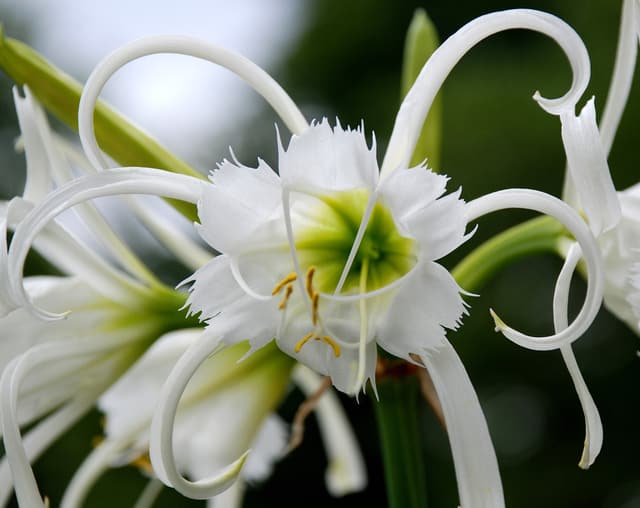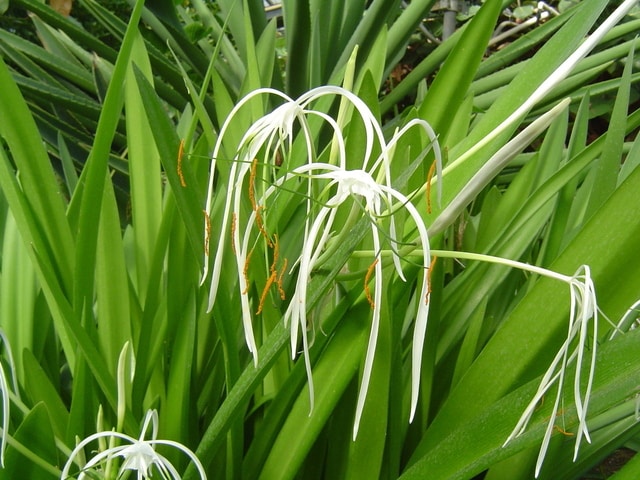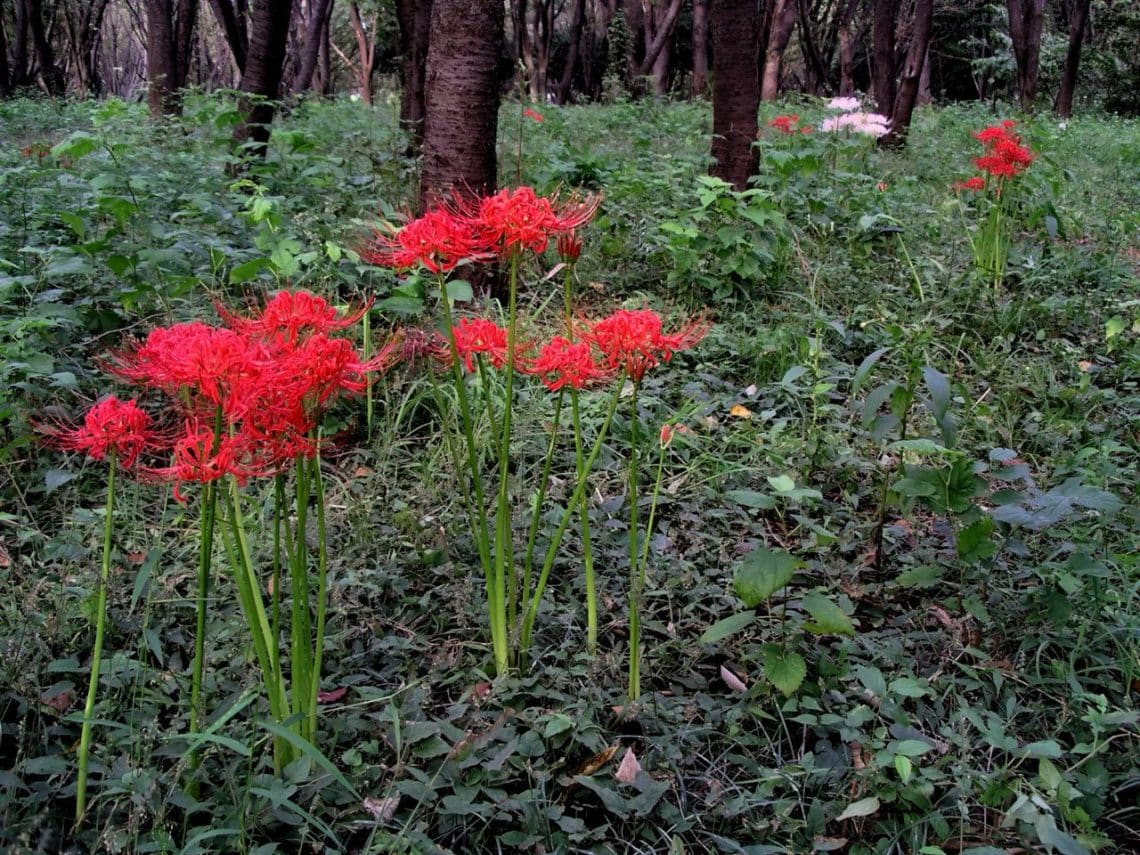Though spring brings a lot of magical surprises to the garden in the way of blooms, by the end of a long summer, the landscape looks a bit ragged. So when you can plant a flower that will pop up and give you a late summer and fall surprise like spider lily, I say plant plenty of them!
Also sometimes called surprise lily, spider lily (Lycoris radiata) is a bulb that belongs to the amaryllis family. The plant features 1- to 2-foot-long delicate stems that appear in late summer and become topped off by red or white flowers that resemble spider legs. In addition to being eye-catching, these unusual flowers attract butterflies and hummingbirds. After flowering, the plant grows strappy gray-green leaves that overwinter in the landscape and disappear in late spring.

(Claudia Meyer/FreeImages.com)
To have luck growing spider lilies in your garden, keep the following cultivation tips in mind.
Choose your planting area. Spider lilies do well in a variety of conditions–from full sun to partial shade. Select a sunny location or a spot that gets morning sun and afternoon shade. These plants can be planted just about anywhere in the landscape. They do well in flower beds, meadows and can even coexist in turfgrass. If you do decide to plant them in your lawn, avoid mowing the planting area when they’re flowering and leafing out.
Prepare the soil. Spider lilies do best in loose, well-drained soil. Amend with compost or pumice prior to planting. Check that the drainage is adequate by digging a 6-8-inch-deep hole and filling with water. It should drain within a couple of hours. If it doesn’t, add more amendments and check the drainage again.

(Ji Ro)
Feed infrequently. Spider lilies aren’t heavy feeders. Apply an organic fertilizer designed for blooming plants in the spring and at planting time.
Divide occasionally. When spider lily flowers become smaller and the plants are less vigorous, it’s time to divide them. This is generally required every three to five years. Do so after the plants finish flowering in the fall.
Dig up the bulbs, keeping as many roots intact as possible. Spray the clumps with water to remove soil and allow the bulbs to dry completely. Then gently remove the smaller bulbs that are surrounding the mother bulb. Store the bulbs with roots intact in a mesh bag in a cool, dark location until spring when you can replant them.
Julie Bawden-Davis is a garden writer and master gardener, who since 1985 has written for publications such as Organic Gardening, Wildflower, Better Homes and Gardens and The Los Angeles Times. She is the author of seven books, including Reader’s Digest Flower Gardening, Fairy Gardening, The Strawberry Story, and Indoor Gardening the Organic Way, and is the founder of HealthyHouseplants.com.

